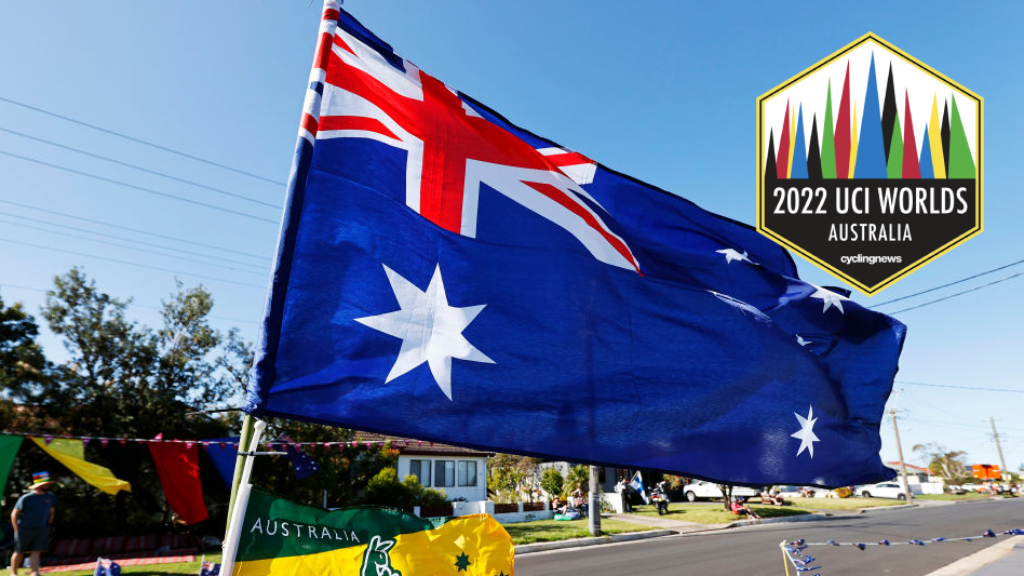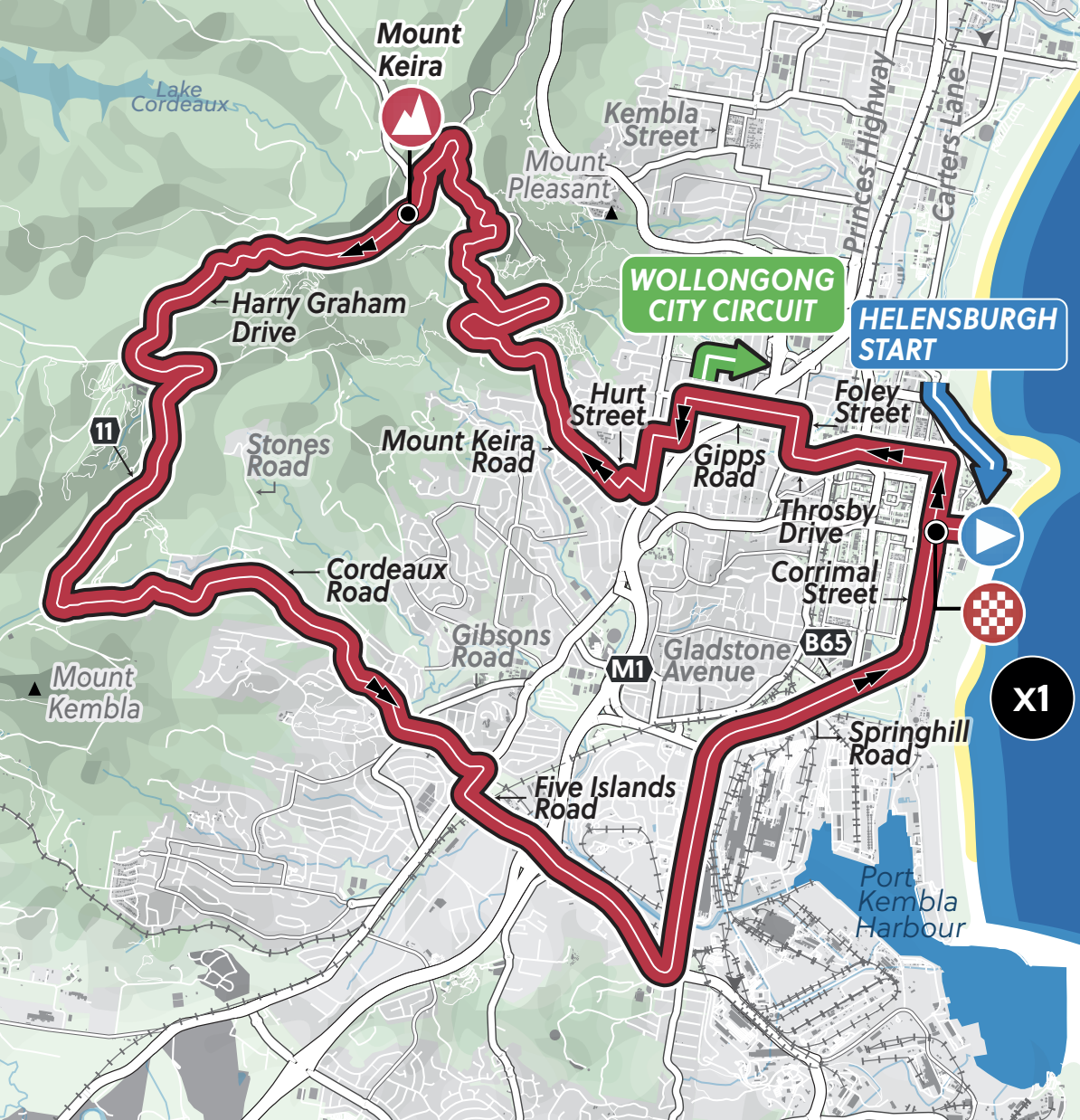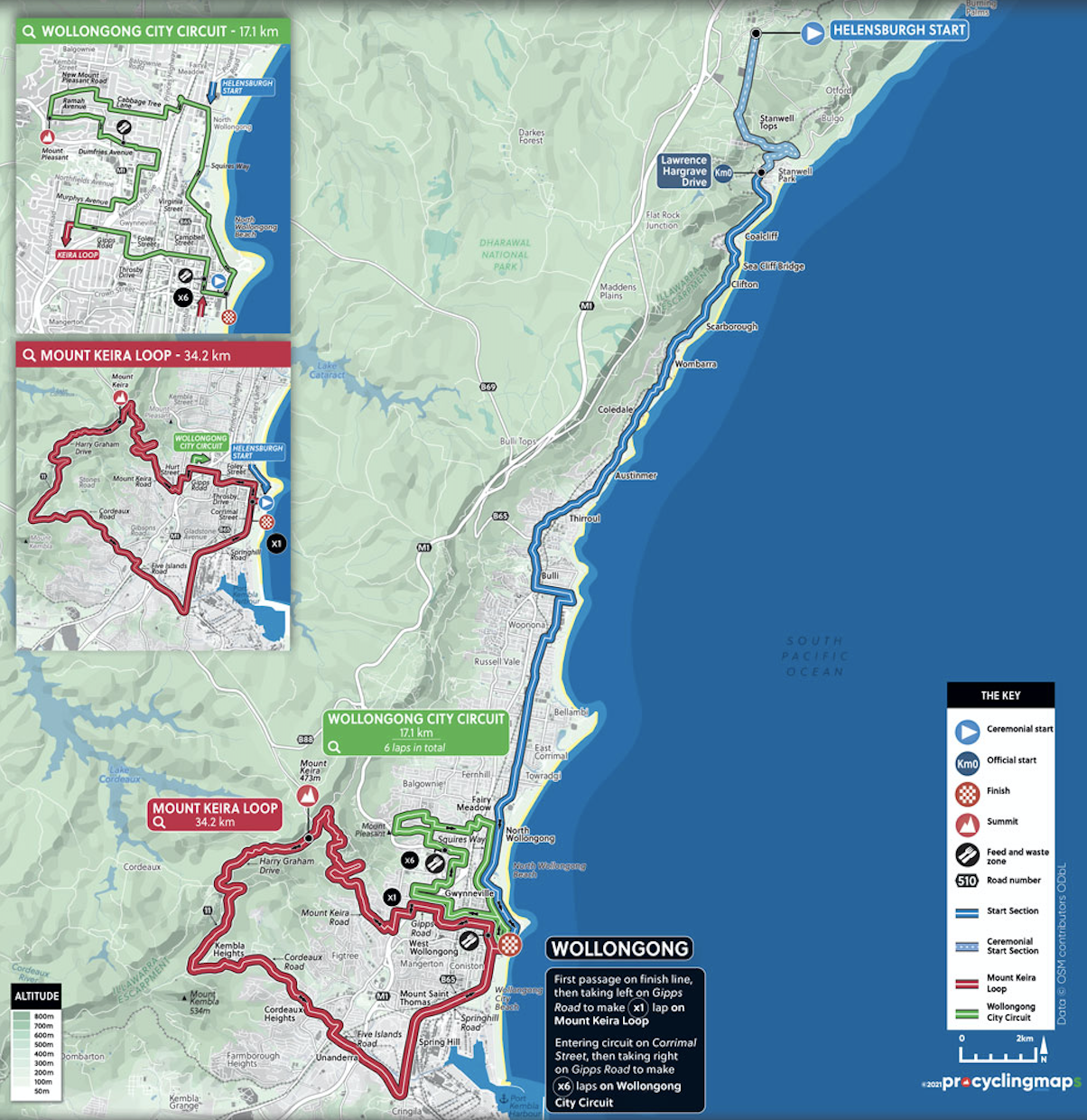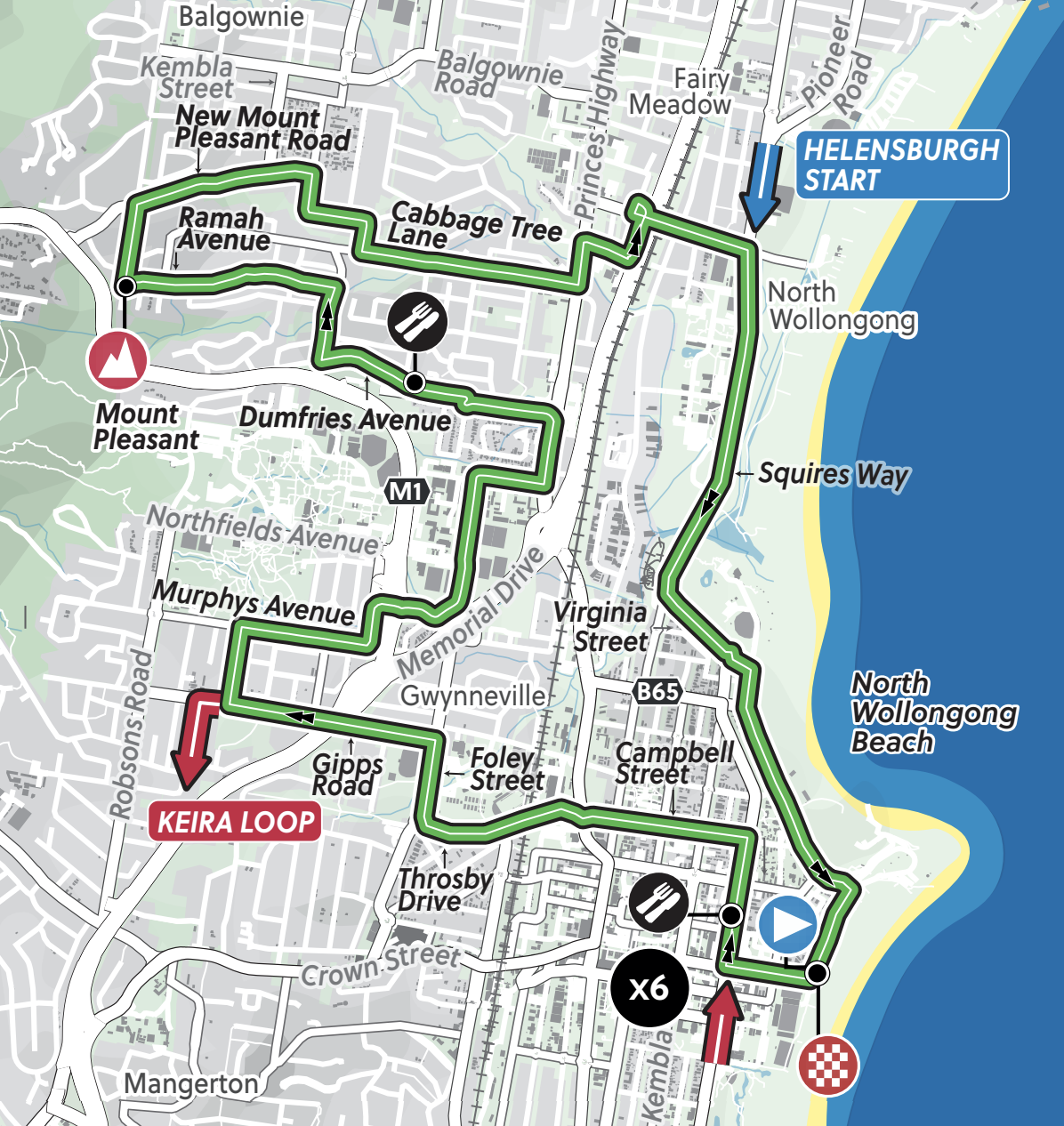Analysing the pinch points of Wollongong's World Championships course
Australia's Amanda Spratt and Mark Renshaw discuss Mount Keira, the city circuit and positioning for the final run to the line

The time trials have been run and won at the 2022 UCI Road World Championships and now the attention is turning toward this weekend’s road races across New South Wales and the pitfalls and opportunities of the challenging parcours.
There will be no cruisy procession to a large bunch finish, but 169.8km for the elite/U23 women and 266.9km for the men of challenging terrain. The climbs aren’t long, but in the later part of the race they just keep coming, with the 2,433 metres of ascent for the women and 3,945 metres for the men, the accumulated fatigue is bound to start weighing long before the finish line is in sight.
The elite/U23 women and elite men work their way from a Helensburgh start, taking the tricky descent down to the coast in neutral before winding south to Wollongong via the spectacular SeaCliff Bridge, which perhaps could get a little windy.
It’s after the course reaches Wollongong that the obstacles begin to be thrown forth with increasing regularity. First the Mount Keira loop takes the field inland and up the Illawarra escarpment to the climb the loop is named after and then it is back to Wollongong again for the city circuit. The women, who race Saturday, take on six laps and then on Sunday the men tackle the heavy loop, with Mount Pleasant as its centrepiece, 12 times.
Across the course, there are a number of pinch points that could make or break the race. We take a closer look at these with Australian team member Amanda Spratt – who has twice been on the podium at the Road World Championships and hails from near the Wollongong course – along with former top sprint lead-out rider Mark Renshaw, who knows the course inside out given his role as Wollongong 2022 safety manager.
Mount Keira - 'The pain begins at Hurt Street'




“The first part to the bottom of Mount Keira here will just be a pretty standard approach in a World Championships,” said Renshaw. “They'll let a break go, they'll slowly start to wind them back in. Mount Keira, I think is where we'll see everybody get a little bit nervous.”
After the 6.9km neutral zone to take riders down the descent from Helensburgh and 27.7km of racing down coast to Wollongong, the riders enter the 34.2km Mount Keira loop, which is home to the biggest ascent of the course. Once in that loop, for a single lap, it doesn’t take long for the climbing to begin.
Get The Leadout Newsletter
The latest race content, interviews, features, reviews and expert buying guides, direct to your inbox!
As Spratt put it “the pain begins at Hurt Street” as that, at the 33.4 km mark of the race, is where the ascent is really starting to set in on the 8.7km of Mt Keira with a 5% average gradient and a 15% maximum.
"It's 8km which is still a decent length climb and the hardest part is at the start as well. So I don't think, a country like the Netherlands are just going to let us ride easy up that climb and not use it to make the race hard and already maybe force a selection,” said Spratt of the tactics in the women’s combined elite/U23 race. “So I think it could go either way, whether there's an attack and a break forms on that climb or whether it's raced hard from bottom to top.”
The climb, though, is early in the race, particularly when it comes to the longer men’s event, so it may be too early to launch a move that sticks, yet that doesn’t mean it won’t be used to try and make a difference in the final outcome.
“The big opportunity is for a country – like France did last year – to really put the speed on a high level on Mount Keira,” Renshaw told Cyclingnews. “I think everybody is going to come back together after the descent before they approach the city circuit but It's a long climb, it's quite steep. and it's really it's going to give someone the opportunity to to put favourites on the back foot already.”
City Circuit - climbs and corners

At 62km into the racing the laps of the 17.1km long Wollongong city circuit start with the climb of Mount Pleasant, up Ramah Avenue, as its centrepiece. The women take on the loop six times and the men 12 times.
"The city circuits are going to fly by,” Spratt told Cyclingnews. “We have the Ramah Avenue climb and then really fast after that and a lot of corners. So I think it's definitely a sort of circuit where you can be away and not have a huge gap but the bunch can't see you, which is always an advantage for a breakaway."
And one obvious point for that breakaway to go is of course the Mount Pleasant climb, which the technical guide puts at 1.1km averaging 7.7% with a maximum of 14%.
"Ramah Avenue is the the jewel in the crown," Renshaw said in the lead up the event. "It's a horrible 900 metres. I think there'll be a lot of guys shocked when they first go and ride the short climb.”
And that's just what a procession of riders were doing in the days beforehand, some like Remco Evenepoel charging up and looking relatively comfortable, others quite the opposite as they hit the steepest section, around a third of the way through the climb.
“It is in three distinctive parts, and in distinctive I mean that you might have about 50 metres of flat before you start the next step in the climb. But this climb for sure it’s the hardest part on the city circuit.”
Though it is certainly not the only challenge, as it is far from a flowing circuit, with a corner count at around 30 certainly adding to the degree of difficulty.
"There's really a couple of sections where you're kind of setting up from one corner to the next," said Renshaw. "It's going to be super fast but you just don't have the ability to float about 20th or 30th position and get a free ride. It's constantly accelerating out of each corner.”
The weather
Another factor that could come into play, particularly on the city circuit, is the weather.
"When we get rain when we have World Championships we do have epic races,” said Renshaw.
So far through the Road World Championships in Wollongong it has been sunny, dry and mild throughout the time trials but a change is on the way. The rain, which has potential to make the corner-laden final circuit trickier, is on the way. Friday’s men’s junior road race and U23 road race, which play out entirely on the city circuit, are likely to wear the brunt of the inclement weather, with a forecast of 8 to 15mm of rain.
The women’s junior and elite/U23 races on Saturday are facing the prospect of a potentially wet race, with the Bureau of Meteorology forecasting a high chance of showers in the morning and afternoon with 1 to 4mm of rain. The risk is far lower on Sunday for the elite men, with the forecast only factoring in a 10% chance of any rain.
The final hurdle

The city circuit may be corner heavy, but the final run into the line is far more flowing as it beats an undulating path along the coast line toward the Marine Drive finish line.
“As you approach the final two kilometres the city circuit opens off and it's much straighter. It plays into the hands of the coming back together for a small bunch sprint," said Renshaw, who spent many years as Mark Cavendish’s prized lead-out weapon.
The final corner, which takes riders from Cliff Road and onto Marine Drive, comes with less than 500m to race, and if it is a group that comes into the line this is one place where you don’t want to yet be at the front.
“It's a super fast sprint, slightly dropping away, which is really good for for coming from behind in the sprint,” said Renshaw. “You don't want to be stuck on the front and you definitely can't hit out from the last turn.”

Simone is a degree-qualified journalist that has accumulated decades of wide-ranging experience while working across a variety of leading media organisations. She joined Cyclingnews as a Production Editor at the start of the 2021 season and has now moved into the role of Australia Editor. Previously she worked as a freelance writer, Australian Editor at Ella CyclingTips and as a correspondent for Reuters and Bloomberg. Cycling was initially purely a leisure pursuit for Simone, who started out as a business journalist, but in 2015 her career focus also shifted to the sport.